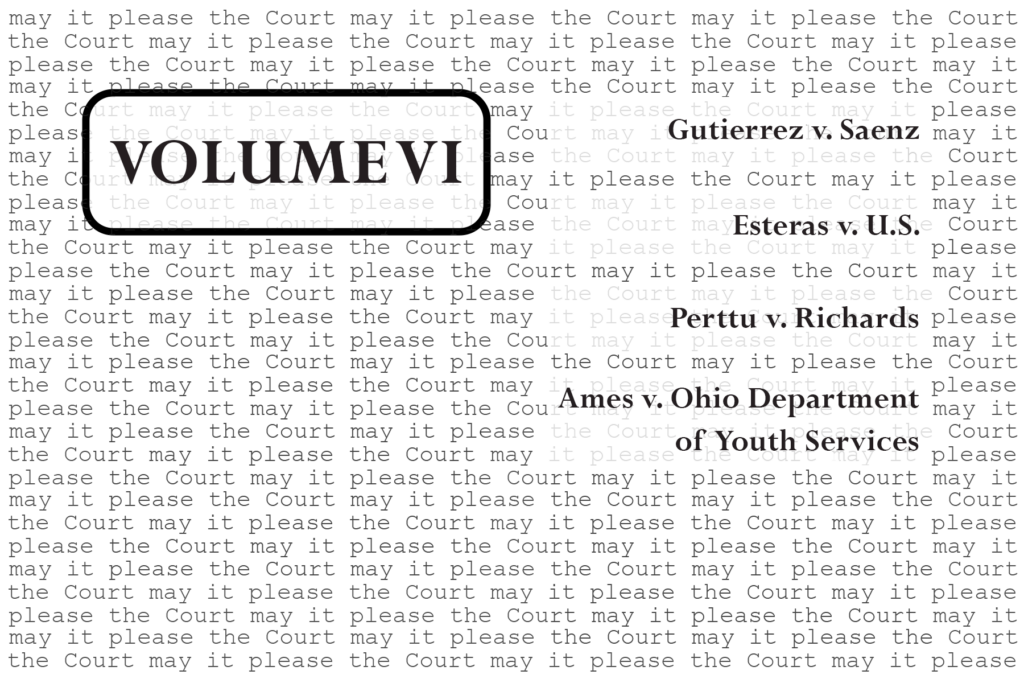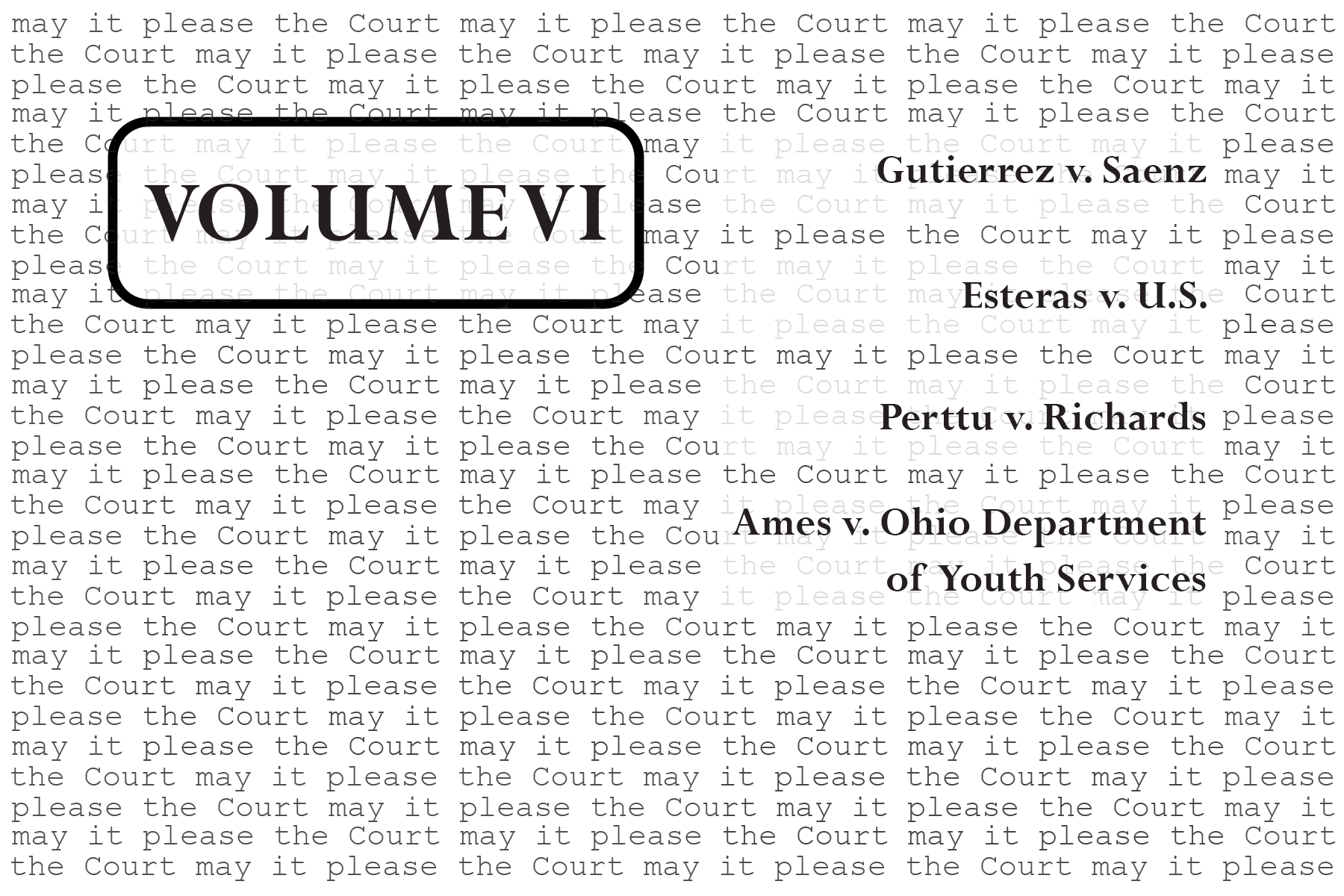
Title VII of the Civil Rights Act and the Prison Litigation Reform Act
Photo Credit: Sarah Mester
By Sarah Mester
The U.S. Supreme Court heard eight cases during the February Sitting, which started on February 24 and ended on March 5. This edition of May it please the Court will cover the first four cases of the February Sitting. It is at this point in the term that the Court begins to regularly release opinions. Amy Howe, a reporter for SCOTUSblog, runs a real-time announcement feed on release days from the Supreme Court that can be found on the SCOTUSblog homepage. Although the Court only hears cases until April, it typically takes until late June or even early July for all of the cases from the term to be decided.
Case Summaries
Gutierrez v. Saenz (Arg: 2.24.2025) Oyez SCOTUSblog
About: Standing
Question: Does a Texas death-row inmate have standing to sue the state over its refusal to grant access to DNA testing under a law that allows such testing only when the person can demonstrate that negative results would have prevented their conviction?
Explanation: Ruben Gutierrez was sentenced to death for his involvement in the 1998 murder of an elderly woman. DNA testing was not required for capital cases at the time, although it now is. Gutierrez was denied the DNA testing because a separate Texas law governing DNA testing only allows testing when the result might provide full exoneration. Texas argued that even if the DNA testing showed that Gutierrez never entered the house where the murder took place, Gutierrez would still be eligible for the death penalty due to being part of the party that committed the crime. If DNA testing would not change his conviction, then the redressability requirement of legal standing is not fulfilled. Gutierrez argued that the denial of testing violated his right to due process. The Court is being asked whether Gutierrez has standing to bring suit and whether the denial of DNA testing and Texas’s use of that law to deny standing violates Gutierrez’s right to due process.
Esteras v. U.S. (Arg: 2.25.2025) Oyez
About: Sentencing Procedure
Question: May a Judge, when revoking supervised release and imposing a prison sentence, consider the sentencing factors described in 18 U.S.C. § 3553(a)(2)(A)—namely, “the seriousness of the offense,” “promot[ing] respect for the law,” and “just punishment”—even though these factors are not explicitly referenced in the law controlling supervised release?
Explanation: Edgardo Esteras violated his supervised release and as a result, Judge Pearson of the U.S. District Court for the Northern District of Ohio imposed a more severe sentence than required by the guidelines. Esteras challenged that his new sentence as a result of violating his supervised release relied on prohibited factors like the seriousness of the offense and the justness of the punishment. The Court is being asked what kind of factors can be considered when punishing violation of supervised release.
Perttu v. Richards (Arg: 2.25.2025) Oyez
About: Seventh Amendment’s Right to Jury Trial
Question: In cases subject to the Prison Litigation Reform Act (PLRA), do prisoners have a right to a jury trial on the question of failure to exhaust non-judicial administrative remedies when that failure is connected with the situation underlying the case?
Explanation: Richards, an inmate, sued Perttu, a prison guard manager, for sexual harassment and retaliation stemming from Perttu’s attempts to stop Richards from filing suit. Perttu argued that Richards had not exhausted all administrative remedies—pursuing all avenues of redress before seeking judicial review—as required by the Prison Litigation Reform Act (PLRA) and that therefore the suit should be dismissed before going before a jury. Richards argued that his failure to exhaust administrative remedies was due to Perttu’s harassment and retaliation that form the underlying reason for the case. In the context of the PLRA, The Court is being asked whether when the failure to exhaust remedies is intertwined with the facts of the case, an inmate has a right to a trial by jury that they otherwise would not have due to failure to exhaust remedies.
Ames v. Ohio Department of Youth Services (Arg: 2.26.2025) Oyez SCOTUSblog
About: Title VII of the Civil Rights Act of 1964
Question: Does a plaintiff who belongs to a majority group need to demonstrate “background circumstances suggesting that the defendant is the unusual employer who discriminates against the majority” in order to establish that there is adequate evidence for a case of discrimination under Title VII of the Civil Rights Act of 1964?
Explanation: Title VII of the Civil Rights Act prohibits employment discrimination based on factors such as race, sex, and sexual orientation. Ames contends that she was denied a job because she was straight and filed a Title VII employment discrimination claim based on sexual orientation. The district court rejected the claim on first impression (known as prima facie) because Ames lacked “background circumstances”—a burden of evidence only applicable to someone of a majority group. The Court is being asked whether a plaintiff belonging to a majority group must show “background circumstances” to establish a prima facie case for Title VII discrimination.
Oral Argument Excerpts
In Perttu v. Richards, Justice Barrett was describing another case relevant to the discussion and made a humorous gaffe (54:40):
Barrett: “Yeah. But, in Jarkesy — I agree, but in Jarkesy, we drew an analogy to fraud and said, like, this is fraud, it’s analogous to frog and — fraud, not frog, sorry — fraud, and that it had an analog.”
It is unsurprising, given the fast-paced, technical nature of oral argument that both advocates and Justices make occasional mistakes. Also in Perttu v. Richards, Advocate for the Petitioner Ann Sherman thought she had been dismissed and started walking away while Justice Thomas was asking a question (27:14):
Sherman: “You’re convincing the judge of exhaustion. And then, because — what saves the day is that collateral estoppel wouldn’t apply. And so, when you’re coming back, the jury is fully acting as the fact-finder in that case.”
Roberts: “Thank you, counsel. Justice Thomas?”
Thomas: “This was dismissed without prejudice — “
Kagan: “You’re not done, sorry.”
Roberts: “You’re not, yeah.”
Sherman: “I’m sorry.”
To be fair to Ann Sherman, Chief Justice Roberts will typically dismiss counsel by saying “Thank you, counsel”. I am, of course, assuming that Ann Sherman started walking away from the podium based on the audio because the Court does not record video of oral argument.
In Esteras v. U.S., Advocate for the Respondent Masha Handsford noted (1:03:20) that it “is a really big step to tell a court that it can’t think certain thoughts at sentencing” and Justice Kavanaugh pointed out that realistically “they’re probably going to think the thoughts anyway”. If you tell a Judge not to consider a factor during a sentencing that might naturally make sense to consider, like the seriousness of the violation, banning the consideration of that factor might not actually be effective because that consideration will likely take place subconsciously anyway. The Court must produce a standard that is legally sound, but also workable in the lower courts. It is this workability problem that Justice Kavanaugh was probably thinking about when he made that comment.



